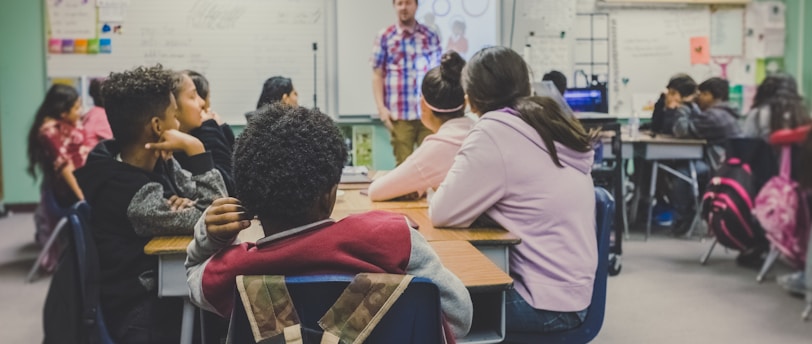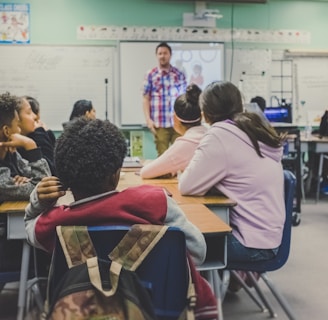Teaching Digital Literacy: Empowering Kids for Online Safety
This post provides an in-depth look at the importance of digital literacy for children. By addressing various aspects such as online etiquette, recognizing dangers, and protecting personal information, it offers practical advice for parents and educators. The goal is to empower kids to become responsible digital citizens, ensuring their safety and well-being in the online world.
ONLINE SAFETY TOOLSCYBERBULLYING AWARENESS
6/3/20244 min read


Introduction
In today's digital age, children are introduced to technology at a young age. While this presents incredible opportunities for learning and connection, it also brings significant risks. It's essential for parents, educators, and child safety advocates to equip kids with the skills they need to navigate the online world safely and responsibly.
Digital literacy is more important than ever. It goes beyond basic tech skills to include understanding online etiquette, recognizing dangers, protecting personal information, and using social media responsibly. This article will provide parents with strategies and resources to help their children become savvy and responsible digital citizens.
Understanding Digital Literacy for Kids
Digital literacy refers to the ability to find, evaluate, create, and communicate information using digital technologies. It's about understanding how technology works and how to use it effectively and safely.
Benefits of Teaching Digital Literacy Early
Enhanced Safety: Children who understand digital literacy are better equipped to avoid online dangers.
Improved Communication: Learning online etiquette helps kids communicate respectfully and effectively.
Critical Thinking: Media literacy promotes critical thinking skills, enabling children to evaluate the credibility of online content.
Empowerment: Kids gain confidence and independence when they know how to protect their personal information and use technology responsibly.
Online Etiquette
Teaching children about online etiquette is crucial for fostering respectful and positive interactions online.
Basic Principles of Online Etiquette for Kids
Respectful Communication: Encourage kids to treat others online as they would in person.
Proper Use of Language and Tone: Teach the importance of clear and respectful language.
Avoiding Cyberbullying: Discuss the impact of cyberbullying and why it's unacceptable.
Tips for Parents to Teach Online Etiquette
Model Good Behavior: Show children how to communicate respectfully online.
Set Clear Expectations: Establish rules for online behavior.
Role-Playing: Practice scenarios where kids can apply their online etiquette skills.
Recognizing Online Dangers
Kids need to be aware of the potential dangers they may encounter online, such as cyberbullying, predators, scams, and inappropriate content.
How to Recognize and Avoid Online Threats
Cyberbullying: Teach kids how to identify and report cyberbullying.
Predators: Discuss the importance of not sharing personal information with strangers.
Scams: Educate children on common online scams and how to avoid them.
Inappropriate Content: Use parental controls and discuss what to do if they encounter inappropriate material.
Strategies for Parents to Educate Their Children
Open Communication: Encourage kids to talk about their online experiences.
Educational Resources: Use age-appropriate materials to teach about online dangers.
Role-Playing Scenarios: Practice recognizing and responding to online threats.
Protecting Personal Information
Online privacy is a critical aspect of digital literacy. Children must learn to protect their personal information from potential misuse.
Types of Personal Information to Protect
Full Name
Address
Phone Number
School Name
Passwords
Practical Tips for Kids
Use Strong Passwords: Teach kids to create strong, unique passwords.
Be Cautious with Information: Encourage them to think before sharing personal details online.
Privacy Settings: Show them how to adjust privacy settings on social media and other platforms.
Tools and Resources
Parental Control Software: Use tools to monitor and protect children's online activities.
Educational Games and Apps: Interactive tools can make learning about online privacy fun and engaging.
Responsible Social Media Use
Social media can have a significant, both positive and negative, impact on children. Teaching responsible use is essential.
Guidelines for Responsible Social Media Use
Setting Boundaries: Establish time limits for social media use.
Encouraging Positive Interactions: Promote kindness and respect online.
Understanding Permanence: Discuss how online posts can be permanent and visible to a wide audience.
Monitoring and Guiding Activity
Regular Check-Ins: Have regular conversations about their social media activity.
Parental Controls: Use tools to help monitor and guide their usage.
Positive Role Models: Showcase examples of positive online behavior.
Internet Safety Lessons
Internet safety education should be a fundamental part of a child's learning.
Key Topics to Cover
Safe Browsing Habits: Teach kids how to browse the internet safely and avoid suspicious links.
Recognizing Trustworthy Sources: Help them identify credible websites and information.
Understanding Digital Footprints: Explain how their online actions can leave a lasting impact.
Resources and Tools
Educational Websites: Use sites like Common Sense Media for helpful resources.
Interactive Lessons: Engage kids with interactive lessons and activities.
Promoting Digital Citizenship
Digital citizenship involves understanding and practicing ethical and responsible behavior online.
Components of Good Digital Citizenship
Respect: Treating others with kindness and respect.
Responsibility: Taking ownership of one’s online actions.
Ethics: Understanding the ethical implications of online behavior.
Activities and Programs
School Programs: Participate in programs that promote digital citizenship.
Community Workshops: Attend workshops that teach digital citizenship skills.
Family Discussions: Have regular family discussions about responsible online behavior.
Cyberbullying Prevention
Cyberbullying can have severe effects on children. Preventive measures are essential.
Understanding Cyberbullying
Definition and Effects: Explain what cyberbullying is and its potential impact.
Signs of Cyberbullying: Teach kids to recognize signs that they or someone else might be experiencing cyberbullying.
Preventive Measures and Strategies
Open Communication: Encourage kids to speak up if they experience or witness cyberbullying.
Reporting Tools: Show them how to report cyberbullying on various platforms.
School Involvement: Work with schools to implement anti-cyberbullying programs.
Media Literacy Skills
In the digital age, media literacy is crucial for evaluating the vast amount of information available online.
Teaching Kids to Critically Evaluate Online Content
Questioning Sources: Encourage kids to question the credibility of sources.
Identifying Bias: Teach them to recognize bias in online content.
Cross-Referencing Information: Show them how to cross-reference information to verify its accuracy.
Tools and Activities
Educational Games: Use games that teach media literacy skills.
Discussion Prompts: Use prompts to engage kids in discussions about online content.
Conclusion
Teaching digital literacy is essential for empowering children to become savvy and responsible digital citizens. By understanding online etiquette, recognizing dangers, protecting personal information, and using social media responsibly, kids can safely and confidently navigate the digital world.
Parents, educators, and child safety advocates play a crucial role in this education. Engage actively in your child's digital life and utilize the resources available to ensure they are well-prepared.
